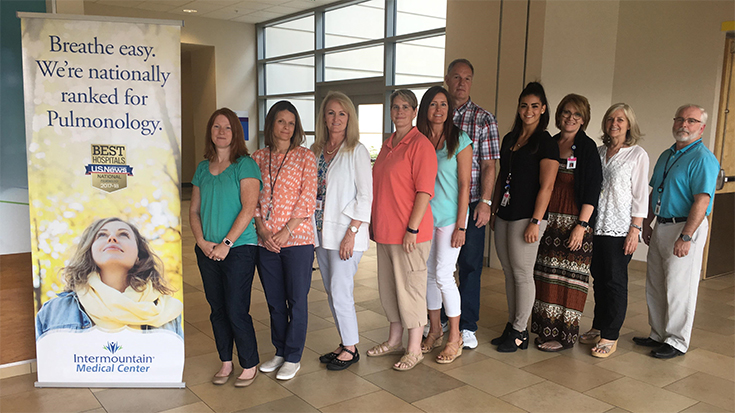
Hospitals under the Utah-based Intermountain Healthcare umbrella are now working to implement pulmonary navigator programs that attempt to streamline care and services for patients with chronic lung disease. Tammy Stucki, RRT, RRT-ACCS, helped to get the program off the ground at Dixie Regional Medical Center in St. George, UT, and she explains why she got involved and how it works for them here.

How long have you been an RT and what role were you working in when you learned about the pulmonary navigator position?
After graduating from the University of Arkansas-Medical Sciences, I became a respiratory therapist in 1995. The majority of my career has been spent in adult critical care at Intermountain Healthcare’s Dixie Regional Medical Center and a small amount in the home setting.
Why did you decide to apply for the job?
I was a nightshift ICU lead therapist and wasn’t even thinking about coming to days for another ten years. However, I was approached to help create this intriguing new position and saw the important need for it in the community.
How were you trained to work in the position?
Oh boy, there was no training — trial and error. After a nationwide search for this type of position, I modeled the program after those at UC-Davis and the Cleveland Clinic, with a flair of our own.
What does the pulmonary navigator job entail?
We are a two-part clinic: Exacerbation and Education. Even though the memory retention might be short, the COPD education begins in the hospital because we have a captive audience. The pulmonary navigators (PN) assist with the patient’s discharge by assessing the home medication needs, outpatient palliative care, and setting up follow-up appointments to return to the Respiratory Outpatient Clinic (ROC). After discharge, the PN will follow-up with the patient in 3-5 days, by phone or ROC appointment, and begin their Disease Process Plan. We find that a majority of patients have never had a pulmonary function test, which should be the standard with every diagnosis, so we facilitate the path to testing and correct diagnosis. We educate the patients about their disease process, encourage pulmonary rehab, and start the Advanced Care Planning conversation.
We utilize our Respiratory Eval & Treat Protocols (COPD Readmission Reduction Arm) to assess and monitor their recent exacerbation. The frequency of contact with the patient is determined by using a SAME/BETTER/WORSE scale. The patients receive a 30-day prescription to the ROC from a discharging hospitalist, PCP, or pulmonologist for Exacerbation Management and Education. The ROC is a 24/7/365 clinic where they can come to have their pulmonary status assessed. This is a great opportunity to keep them on the outpatient side and reduce the readmission rate.
What are top challenges and top rewards of working in this position and why?
One challenge that we have faced is advertising and getting buy-in from the physicians in the area, but I feel that with time they will see the importance of a pulmonary navigator in the community. Another challenge is determining how many PNs to have for the community because it is such a new program and we are just starting to process data.
The top reward is when a patient tells me “I never knew that.” The focus has always been on heart disease and diabetes and it is about time that our COPD population received the recognition and education they need and stop becoming the “frequent fliers” of the hospital.
Do you have a good example of how your pulmonary navigator program helped a particular patient?
I met with a sweet grandmother for education while she was in the hospital recently. She mentioned the financial burden that she was having with her inhalers — $1,500/month — and after reviewing her medication list, I found the problem. She was taking three LABA/ICS because she didn’t understand her disease process and treatment regimen.
On her follow-up appointment in the ROC, she mentioned that she was WORSE and after contacting her physician she needed to have a CT and an ABG. She was distressed about having to drive back and forth — 45 minutes each way — for those procedures. As PN, it was easy for me to maneuver and consolidate the procedures, whereas a patient might have difficulty. As she left the ROC for her CT, she called me her “guardian angel” and gave me a squeeze.
Do you think pulmonary navigator is a role more RTs could take on? What advice do you have for those who might like to transition into this role?
I feel like this is a new and creative role in the field of respiratory. I would advise getting a total buy-in from your leadership for this type of program and model it after several different successful programs based on the needs that you have in your community.





